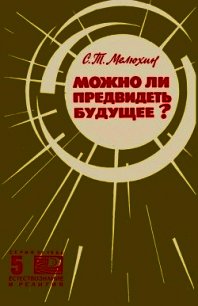Далекое будущее Вселенной Эсхатология в космической перспективе - Эллис Джордж (читать книги без .TXT) 📗
Согласно СТО, уникального глобального причинно–следственного будущего не существует. Причинно–следственное будущее любых двух событий Р и Q обладает некоторыми общими событиями; однако всегда имеются и другие события, лежащие либо в причинно–следственном будущем Р, но не Q, либо в причинно–следственном будущем Q, но не Р. ОТО, однако, предоставляет возможное «условие» для эсхатологического глобального будущего: она показывает, что топология вселенной зависит от распределения материи, и допускает разнообразные топологии будущего, в том числе и такие, в которых геодезические не разнесены на произвольное расстояние [164].
Учитывая все сказанное о соприсутствии, пролепсисе и глобальном будущем, мы можем предложить следующую НИП:
НИП 6: следуя ориентиру 8, задается вопросом: в какой степени эти и другие черты физики и космологии указывают (и указывают ли вообще) на сложный характер времени и временной стрелы как признаки существования предварительных условий для со–присутствия, пролепсиса и глобального будущего ?
17.6. Заключения и направления будущей работы
В этой статье я постарался показать, что продолжение дискуссий о воскресении, эсхатологии и космологии чрезвычайно важно не только для диалога «богословие и наука», но и для некоторых центральных областей современного христианского богословия; что в случае, если мы будем развивать методологию, стремясь сделать дискуссию по–настоящему взаимной, на этом пути возможен прогресс; наконец, что поиск возможных областей исследования как в богословии, так и в науке может привести к результатам, ценным для обоих полей. Пока что мы сделали лишь самые предварительные шаги, но, надеемся, они показали, что такой прогресс, по меньшей мере, потенциально возможен, и направления нашей будущей работы стали яснее.
Литература
1. Alighieri, D., "The Paradiso", in The Divine Comedy,trans. John Ciardi (W. W. Norton, New York, 1970), canto XX, vs. 88–90.
2. Ayala, F. J., "Darwin's Devolution: Design without Designer", in Evolutionary and Molecular Biology: Scientific Perspectives on Divine Action,eds. R. J. Russell, W. R., Stoeger, S. J., and F. J. Ayala (Vatican Observatory, Vatican City State/Center for Theology and the Natural Sciences, Berkeley, Calif., 1998).
3. Barbour, I. G., Religion in an Age of Science,The Gifford Lectures, 1989–90 (San Francisco: Harper and Row, 1990).
4. Barbour, I. G., "Five Models of God and Evolution", in Evolutionary and Molecular Biology: Scientific Perspectives on Divine Action,eds. R. J. Russell, W. R., Stoeger, S. J., and F. J. Ayala (Vatican Observatory, Vatican City State/Center for Theology and the Natural Sciences, Berkeley, Calif., 1998).
5. Barrow, J. D., Impossibility: The Limits of Science and the Science of Limits(Oxford University Press, Oxford, 1998), 155–89, esp. 181.
6. Barrow, J. D., "Cosmic Questions", paper from AAAS Program of Dialogue on Science, Ethics, and Religion, Washington, D. C., April 14–19, 1999. После этого статья Бэрроу, озаглавленная "Cosmology, Life, and Anthropic Principle" была опубликована в Annals of New York Academy of Sciences,vol. 950; Cosmic Questions, ed. J.B. Miller (New York Academy of Science, New York, 2001).
7. Barrow, J. D., and Tipler, F. J., The Anthropic Cosmological Principle(Clarendon Press, Oxford, 1986).
8. Birch, C, "Neo‑Darwinism, Self‑Organization, and Divine Action in Evolution", in Evolutionary and Molecular Biology: Scientific Perspectives on Divine Action,eds. RJ. Russell, W. R. Stoeger, S. J., and F. J. Ayala (Vatican Observatory Publications, Vatican City State/Center for Theology and the Natural Sciences, Berkeley, Calif., 1998).
9. Birrell, N. D., and Davies, P. C.W., Quantum Fields in Curved Space(Cambridge University Press, Cambridge, 1982).
10. Bynum, C. W., The Resurrection of the Body in Western Christianity,200–1336 (Columbia University Press, New York, 1995).
11. Capek, M., "Time in Relativity Theory: Arguments for a Philosophy of Becoming", in The Voices of Time: A Cooperative Survey of Man's Views of Time as Expressed by the Sciences and by the Humanities,ed. J. T. Frazer (University of Massachusetts Press, Amherst, 1966, 1981), 434–54.
12. Clayton, P. Explanation from Physics to Theology: An Essay in Rationality and Religion(Yale University Press, New Haven, Conn., 1989).
13. Cohn, J. D., "Living with Lambda", Astroph/9807/128 V2 Preprint(1998).
14. Davis, S. Kendall D., S. J., and O'Collins, G., eds., The Resurrection(Oxford University Press, Oxford, 1997).
15. de Beauregard, O. C., "Time in Relativity Theory: Arguments for a Philosophy of Being", in The Voices of Time: A Cooperative Survey of Man's Views of Time as Expressed by the Sciences and by the Humanities,ed. J. T. Frazer (University of Massachusetts Press, Amherst, 1966, 1981), 417–33.
16. Deason, G. B., "Protestant Theology and the Rise of Modern Science: Criticism and Review of the Strong Thesis", CTNS Bulletin, 6.4., 1–8 (Autumn 1986).
17. Drees, W. B., Beyond the Big Bang: Quantum Cosmologies and God(Open Court, La Salle, 111., 1990).
18. Dyson, F., "Time without End: Physics and Biology in an Open Universe", Rev. Mod. Phys., 51,447–60 (1979).
19. Dyson, F., Disturbing the Universe(Harper and Row, New York, 1979).
20. Dyson, F., Infinite in All Directions(Harper and Row, New York, 1988).
21. Ellis, G. F.R., Before the Beginning: Cosmology Explained(Boyars/ Bowerdean, New York, 1993).
22. Ellis, G. F.R., "Ordinary and Extraordinary Divine Action: The Nexus of Interaction", in Chaos and Complexity: Scientific Perspectives on Divine Action,eds. R. J. Russell, N. C. Murphy, and A. R. Peacock, Scientific Perspectives on Divine Action Series (Vatican Observatory Publications, Vatican City State/Centre for Theology and the Natural Sciences, Berkeley, Calif., 1995), 384.
23. Ellis, G. F.R., "The Thinking Underlying the New 'Scientific' World‑Views", in Evolutionary and Molecular Biology: Scientific Perspectives on Divine Action,eds. RJ. Russell, W. R. Stoeger, S. J., and F. J. Ayala (Vatican Observatory Publications, Vatican City State/ Center for Theology and the Natural Sciences, Berkeley, Calif., 1998), 251–80.
24. Ellis, G. F.R., "Природы бытия (временная и вечная)", гл. 18 настоящей книги.
25. Ellis, G. F.R., Hwang, J. C, and Bruni, M., Phys. Rev., D, 40,1819–26 (1989).
26. Ellis, G. F.R., and Stoeger, W. R. (S. J.), "Introduction to General Relativity and Cosmology", in Quantum Cosmology ans the Laws of Nature: Scientific Perspectives on Divine Action,eds. R. J. Srussell, N. C. Murphy, and C. I. Isham, Scientific Perspectives on Divine Action Series (Vatican Observatory Publications, Vatican City State/Center for Theology and the Natural Sciences, Berkeley, Calif., 1993).
27. Folse, H. I. "Complementarity, Bell's Theorem, and the Framework of Process Metaphysics", Proc. Stud., 11, no.4, 259–73 (Winter 1981).
28. Foster, M., "The Christian Doctrine of Creation and the Rise of Modern Science", in Creation: The Impact of an Idea,eds. D. O'Connor and F. Oakley (Charles Scribner's Sons, New York, 1969).
29. Geroch, R. P., "Singularities in Closed Universes", Phys. Rev. Lett, 17,445–47(1966).
30. Goldsmith, D., Einstein's Greatest Blunder? The Cosmological Constant and Other Fudge Factors in the Physics of the Universe(Harvard University Press, Cambridge, Mass., 1995).




